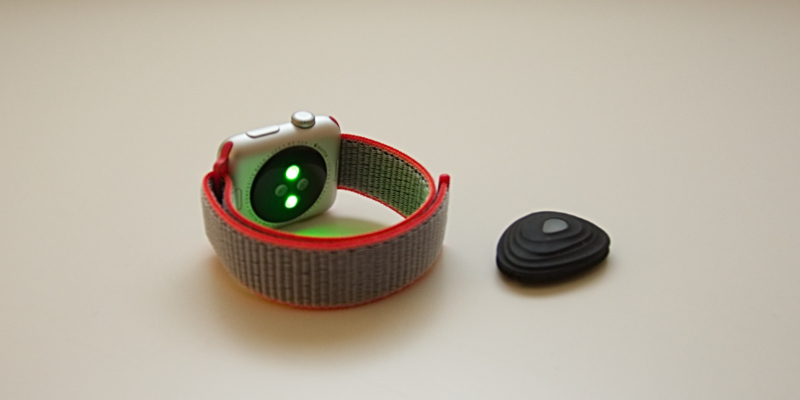Heart Rate and Running Power
How to validate running power data with heart rate
Power meters are the most compelling new fitness sensors to hit running in years, and some athletes are so convinced by their effectiveness that they stop using heart rate, pace, and other metrics altogether. While it's completely up to you (or your coach) how you train and race, you need to carefully consider everything you're giving up when you run with only a single performance metric — such as using heart rate to validate running power data.
Let's get this out of the way right at the start: If you go all-in with running power and ignore everything else, that's fine. This could be the most effective strategy for you. We are simply highlighting the benefits of using multiple metrics.

Example #1: Interval Recoveries
Interval training offers many benefits: it can help improve your speed, it can provide a more vigorous workout in a shorter amount of time, etc. It's also a great way to measure your efficiency and fitness level when training with running power and heart rate.
A typical power zone interval could have you maintain Zone 5 power for 1 minute, then be followed by a 3 minute recovery interval in a lower zone, and then repeat. As you get more fit, this kind of workout will still feel intense, but you may notice that it becomes easier than it was in the past. Put another way, it will have a lower RPE (Rate of Perceived Exertion).
It's possible to utilize heart rate data to validate how you feel during your power zone interval workouts. Your heart requires more time to ramp up at the start of an interval (compared to power and pace), and it takes a longer time to settle down afterward. Instead of dismissing this lag as a fault, embrace it for what it is, and gather the useful information it provides.
Using the workout comparison tools in SportTracks, you can directly compare recent and past interval workouts. If you noticed that the active power-zone intervals felt easier than they did in the past, analyze your heart rate data. You may see that the overall BPMs are lower in the workout that felt easier, or that your heart was able to recover more quickly. Both are signs of improved fitness and endurance.
SIDE NOTE: When workouts feel easier it's a sign that your fitness is improving and that your training zones may need to be updated. This is why you should test your LTHR every six weeks. When you wear a running power meter, this test provides your LTHR, Threshold Pace, and Running FTP.
Example #2: Decoupling
When you monitor both your running power and heart rate, you will see how the two metrics behave similarly based on the same stimulus, and more importantly, you will see how they react differently and go on separate paths. This is called decoupling, and it provides actionable information when it occurs.
An unexpectedly high heart rate can indicate that you need more rest.
For example, if you maintain a consistent power zone on a run and you see that your heart rate is fluctuating, it's a sign that you may need more aerobic base training. On a runs where you maintain a specific power zone for extended periods of time, you can compare identical workouts over time to see if your heart is working harder or more efficiently to maintain the same power zones. Improvement here is an excellent indicator of fitness.
If you maintain a specific heart rate zone for a longer duration of time (a half hour or more), you can look at your watts to determine the state of your endurance. Again, by utilizing workout comparison tools, if your wattage increases over time when maintaining the same heart rate zone, you are getting more efficient and powerful.
Example #3: Easy Days
Most training plans include harder days, easier days, and rest days. In order for the plan to truly be effective, you need to adhere to it as much as possible. This means doing all of the miles on long runs, and making sure your intensity stays high on hard days. However, in order to truly be successful, you need to take rest days and easy days as seriously as the hard work.
On easy days when you're trying to maintain lower power zones, your heart rate data can be invaluable. For example, say your training plan calls for a slow and steady 45 minute run in your Zone 2 power. You execute this workout and dutifully maintain the Zone 2 effort, however, halfway through your heart rate shoots up to Zone 4 or higher. Despite your best intentions, this is no longer an easy workout.
If you don't wear a heart rate monitor on easy days, you won't truly know of you're sticking to your plan. An unexpectedly high heart rate can indicate that you need more rest. It's a clear signal that even an easy workout is too much strain, and that rest would be more beneficial.
Wrapping up...
So there you have it: three examples of how heart rate can compliment and validate running power data. Remember, neither one is perfect. Running power is still very new and evolving as a metric, and likewise experiencing some teething pains. Heart rate data can be influenced by diet (espresso anyone?), lack of sleep, poor health, excessive heat, and stress levels.
But despite the downsides, both are still useful and informative. And like a good rock band, their sum is greater than their parts.
If you have any thoughts on this subject, please share them in the Comments section below...
| Article written by Sam Mallery, Director of Marketing, Zone Five Software Inc. |

Comments
Read https://www.ridersite.org/SBTraining/HeartRateFundamentals.pdf